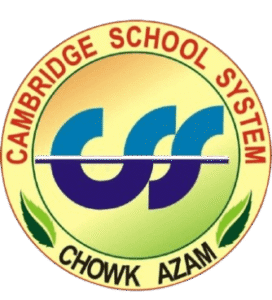Cambridge School System
The tension between excellence Classroom and equality is reconcilable if we recognize that universities require diversity to promote learning David Citation 2007. Emerging from this reasoning, the curricula, pedagogies, and admissions policies at elite universities ought to disrupt those inequalities that prevent diversity.
This article critically reflects on designing a Cambridge foundation year FY that can motivate applicants from low socio-economic groups SEGs to promote diversity. We apply Bourdieu’s 1984, 1990a notions of habitus, capital, and field to underpin our curriculum development practice. Rejecting deterministic reports best teacher study on Bourdieu’s theory of determinism, we investigate its potentially transformative role for creating an FY capable of identifying the symbolic value of and enriching all students’ habitus and capitals; adjusting pedagogy to accommodate multiple habitus and capitals and changing the field of an elite university Mills, Citation2008.
Despite growth in HE in the UK since the 1960s, SEG variation in the relative rate of participation remains, and low SEG students are under-represented in elite universities Martinson, Citation2016. Bourdieu Citation1973, 85 contends that elite universities are the preserve of the ruling class, which use the ‘cloak of a perfectly democratic method of selection’ to disguise social reproduction. The scope and processes of reproduction have been widely debated, yet elite formation in the UK is an ongoing function of prestigious universities, Sutton Trust Citation 2019.
Curriculum design and foundation years a Bourdieu Sian perspective. There is a limited range of research that responds to the potential of Bourdieu Sian ideas to shape WP initiative design and FYs that can support diversity in HE. Hayton, Haste, and Jones Citation 2015. Hannon, Fess, and O’Sullivan Citation 2017. O’Sullivan et al. Citation2019. A deterministic theory of reproduction by Bourdieu Citation1984 is often contended to be given, where static inequalities resulting from education are highlighted.
But such criticism overlooks Bourdieu’s Citation1990b effort to transcend dualisms in sociology, such as that between agency and structure, and has been discounted as ironic Reay Citation2004, 432 Mills Citation2008, 81. In brief, the accusation of determinism overlooks Bourdieu’s Citation1984 theory of social practice. Therefore, ideas such as habitus, embodied dispositions directing action, cultural capital, accumulated, proper and Teacher MBBS Graduate transmitted cultural wealth, and field, the social environment of practice, are analyzed in isolation and separated from the effort of resolving antinomies in sociology Reay, Citation2004.
Yet, the relevance of Bourdieu Sian ideas in accounting for and subverting educational inequality is accessible only in their entirety. Or, in concise terms, habitus capital field practice’s Bourdieu Citation1984, 101. Further, notions of ‘academic capital’, that is, the acquisition of scholastically acknowledged knowledge and family- and school-transmitted practices, are still overlooked in FY studies Bourdieu, Citation1984, 23.
SEG Students
Deficit accounts of low SEG students’ social and cultural capital tend to appear in WP and FY studies, and their habitus is often described as needing to be adjusted to that of the ‘dominant culture’ of the field Hanon, Fess, and O’Sullivan, Educational Philosophy & Approach Citation2017, 1227. We wished to sidestep such an account from the very beginning.
There is School no lack of capitals or habitus among lower SEGs for Bourdieu 1984 instead, it is the symbolic evaluation and misrecognition of different types of habitus and capitals by the powerful through their practices that perpetuates inequality. Also, the powerup’s imposed knowledge in education is an arbitrary discourse that legitimates their class interests. Lower SEG students who survive to enter elite HE can feel like fish out of water, since their habitus and capitals meet a field ruled by the practices of the privileged Reay, Crozier, and Clayton Citation2009, 1104.
Current social practices in elite HE can be seen to reproduce inequality, but this does not make the concepts accounting for such a relationship deterministic per se. As Reay points out, ‘while habitus takes account of the social position it was constructed within, it also contains the origins of new creative solutions with the potential STEM activities Cambridge schools, Cambridge homeschooling support, Study abroad programs Cambridge, Cambridge school reviews, Cambridge school fees, Cambridge school term dates, to exceed the social conditions in which it was made 2004, 435. In seeing the potential in Bourdieu Sian ideas for transformation, their use in curriculum planning starts to become apparent.
Research strategy
The Cambridge FY design was included in a 2016–2018 project. Ethical approval for all the research was granted by the University’s General Board. It was resolved to include Cambridge in all research activity and to do so in a way that expressed a wish to make the research environment without compromising the confidentiality of project participants.
We started by systematically reviewing literature on studies of the design and performance of FYs and comparable programs in Anglophone nations, Australia, New Zealand, South Africa, the US, and the UK. Altogether, 133 papers were recognized using the Education Resources Information Center database. Cross-country comparisons of curriculum projects for HE systems pose challenges. Course designs differ, in line with national demands, and student groups exhibit different experiences of inequality.
Yet, five Key Success Factors KSFs pertinent to designing successful FYs were framed from the review, but not a typology of FY courses. These KSFs, Education, Classroom, School supplies, Homework, Attendance, Elementary school, the review’s main messages, are outlined in the following section to put into context and justify our FY design.
Having established the architecture of an FY, we created an online survey to survey students taking Advanced level and Business Technology and Education Council courses to assess their reaction to the initiative. Students taking courses at this level were chosen because limited contextualization of admissions could be anticipated. A sample frame was acquired that comprised all schools and colleges in the area, including average examination results.
Transforming Cambridge
The design of the intended foundation year, International scholarship has habitually responded to the problem of curriculum construction in HE Chemistry for disadvantaged students. In South Africa, as a case in point, reforms in university admissions policy consequent on the demise of apartheid necessitated attention to the nature of FYs in the sciences and mathematics to address ‘black’ and SEG disadvantage.
Grayson Citation 1996, Naidoo Citation 2004, Malan, Ndlovu, and Engelbrecht Citation 2014. In New Zealand and Australia, FY and tertiary enabling program design and effectiveness in the AHSSs and health sciences have been studied to foster HE among indigenous and low SES students Claretha Citation, 2003 Trewartha Citation, 2008 Curtis, Townsend, and Airing, 2012.
Conclusion
Reading through the global research Cambridge on FYs and researching students from the region primarily strengthened our initial assumptions.
The student preferences indicated in the survey vindicated our initial reservations regarding the likelihood of an FY being effective in securing SEG diversity at Cambridge. Moreover, applying Bourdieu Sian ideas in their entirety, prioritizing to prevent a deficit conceptualization of students’ habitus/capitals, are aligned with previous research and allow us to contend that it is Academics’ pedagogical approaches and the field that need to be altered Bourdieu, Citation1990b; Reay, Citation2004.
This dedication to transforming the discipline of elite HE, thereby establishing a social space for change among students, was cemented by the lessons we learned from synthesizing the international research. Search can facilitate low SEG students’ abilities to acquire new disciplinary knowledge and academic literacies as a tool to enhance their life chances, but they do not change students’ identities as doing so might detach them from their biographies, families, and communities Grayson Citation1996 Curtis, Townsend, and Airing 2012 McLellan, Pettigrew, and Sper linger Citation2016.
Four key obstacles to participation were noted by students in our questionnaire that call for fundamental transformation of social practices in the discipline, not a technocratic solution, if a FY is going to incentivize diversity as excellence at Cambridge.
First, the criteria on which a Cambridge FY is selected must either involve more significant grade drops for low SEG students than contemplated, as proposed by Oliver et al.
Citation 2017, or a ‘learning potential approach‘ must be applied, Grayson Citation 1996, 996. It utilizes diagnostic assessments within university-based selection activities that are pre-programmed for all applicants so as not to lead to the misrecognition of divergent habitus/capitals, knowledge, and academic literacies, since prior qualifications are accountable for prospective students’ characteristics. Learning potential can overcome SEG differences in access to FYs and, if implemented, could assist in maximizing diversity at Cambridge Grayson Citation 1996.




